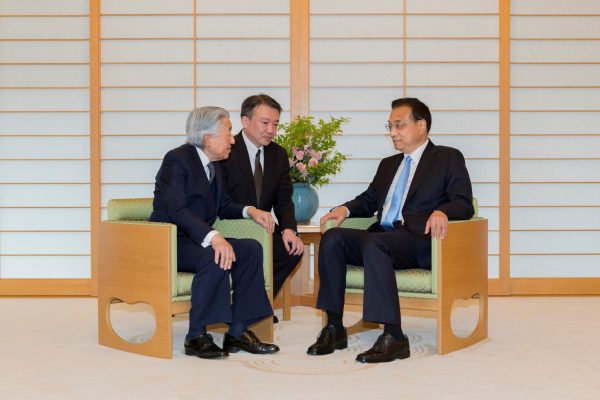At the same time, mixed signals from the Trump administration are undermining the United States’ reliability as an alliance and trade partner, pushing Asian diplomatic efforts towards a shared centre. Together, North Korea’s pull and the United States’ push brought the leaders of China, Japan and South Korea to the table as they seek to harmonise foreign policies in a bid to secure regional stability.
Some suggest that the summit can serve as a possible mechanism to facilitate negotiations for the denuclearisation of the Korean Peninsula. Such a view is overly optimistic. China, Japan and South Korea remain worlds apart on their fundamental strategic priorities in East Asia.
Rather, the summit’s true value lies in its provision of a crisis-management mechanism to ease the varied and precarious bilateral disputes in the region. No comfort women controversies, no territorial dispute claims and no imperial legacy questions were raised in May. The summit made progress by excluding stalemate issues. This pragmatic approach is desperately needed.
Japan’s containment policy towards China and China’s hard-line policy towards Japan have led to diplomatic dilemmas for both sides. Pressured by domestic politics and public sentiment, leaders in both countries are unwilling to show gestures of diplomatic compromise — despite bilateral trade and investment reaching all-time highs. Even if Beijing and Tokyo share a willingness to restore bilateral relations, the arrangement of frequent direct visits and bilateral meetings between political leaders appears to be a distant proposition.
Some in Washington view the summit as a potential threat to US hegemony. These concerns are overblown. Indeed, Washington should welcome the outcome of China–Japan–South Korea trilateral diplomacy — instability rising from any of their bilateral disagreements would spell disaster for US interests on the Korean Peninsula. The summit curtails the likelihood of instability.
The summit also works towards US objectives on the Korean Peninsula by fashioning ‘a meeting of the minds’ about the pressing importance of securing a resolution to the North Korean situation. While the wording of the joint statement on the inter-Korean summit was an exercise in cautious compromise and not ultimately what Japan was hoping for, it represents the first time in China–Japan–South Korea diplomatic history that the three states have issued a joint statement on North Korea.
Sceptics will argue that the text is merely symbolic. But it is undeniably an incremental upgrade towards regional stability. The true value of the summit lies in its ability to produce such stepwise upgrades.
The summit reduces the chance that Washington will become entangled in East Asian disputes in which it has no desire to be involved. The summit’s capacity to help restore bilateral relations between Japan and South Korea is no small reward for the United States’ security strategy in the region. Washington has sought to strengthen Japan–South Korea relations for decades, to little avail.
Instead of questioning the trilateral grouping, Washington should capitalise on the summit’s utility for producing outcomes that address US strategic interests in the region without producing worrisome advances on the hard security front. If Washington engages in a dose of back-channel coordination with Japan and South Korea, it can ensure that the summit stays its course in building economic ties of mutual interdependence while remaining politically benign.
By serving as a buffering mechanism to thorny bilateral impasses, the summit constitutes the region’s best chance for building the diplomatic bridges necessary for peace and stability in Asia. As North Korea’s ‘peace posture’ progresses and while rickety US leadership under Trump remains, the summit’s importance and impact will continue to grow.
Yet expectations must remain realistic and pronouncements of breakthroughs must be weighed against the evidence. The summit will not coordinate closely on denuclearising the Korean Peninsula, nor will it engage intimately in high-security affairs more broadly. What it will accomplish is the building out of avenues — grounded in economic pragmatism — for communication and engagement between China, Japan and South Korea, all of which will be vitally important to managing crises in a crisis-prone region.
Flanked by Chinese Premier Li Keqiang and South Korean President Moon Jae-in at the Royal Palace State Guest House in Tokyo, Japanese Prime Minister Shinzo Abe noted at the close of proceedings in May how the summit provided a ‘very strong foundation’ for jointly responding to regional and global issues of mutual concern.
While these sanguine words might not truly reflect the security challenges facing the three countries, and while the summit itself may not serve as a sharply honed instrument for denuclearising the Korean Peninsula, it can serve as a mechanism for peace and stability in the region. And that is a win for all involved.
Matthew Brummer is a lecturer at Hosei University, Japan.
Muhui Zhang is an assistant professor at Pusan National University, South Korea.

